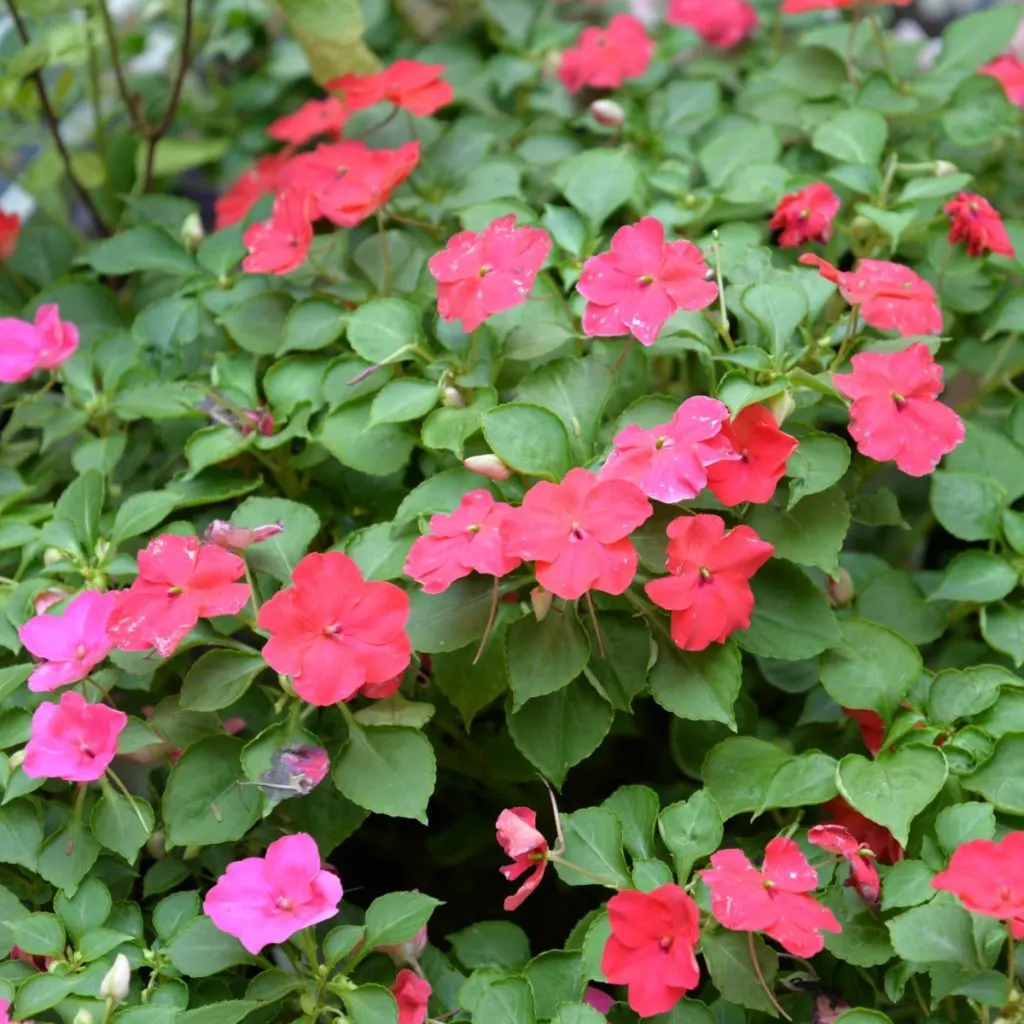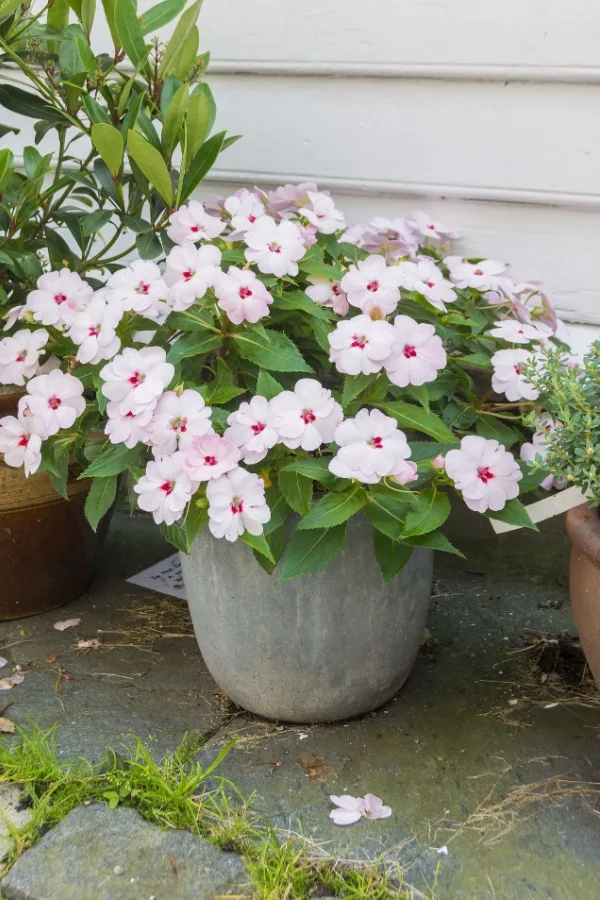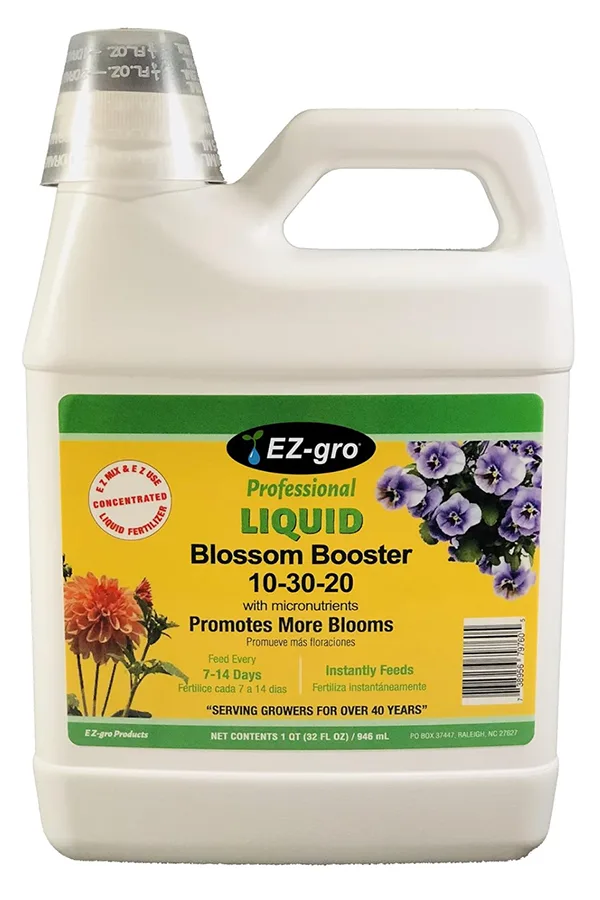One of the most important things you can do to help keep your impatiens blooming all summer long is to fertilize them on a regular basis. But, as you will see in today’s article – knowing which type and which nutrients to feed these shade loving annuals is the real secret to having your impatiens explode with color!
Impatiens are a popular flowering annual that push out a continual display of brightly colored blooms all summer long. What makes them so desirable is that they have the ability to grow in locations where other plants often struggle to produce blooms.
Most flowering plants require full sunlight in order to set blooms, but impatiens not only tolerate the shade, they thrive in it! In fact, trying to grow impatiens in the full sun is usually a recipe for disaster. Not just with blooms, but for the plant’s well being!

But what really helps impatiens create their stunning display of blooms is making sure they have plenty of energy available in the soil. And that means feeding your plants at just the right time, with just the right recipe for producing blooms and flowers.
How To Fertilize Impatiens – The Best Fertilizer To Use For Big Blooms!
Even though impatiens are not a high-maintenance plant, they still require a lot of nutrients in order to continually push out blooms. And one thing is for sure – as the growing season goes along, those nutrients can quickly get depleted from the soil.
This can cause impatiens to slow down their blooming quickly. And if the lack of nutrients are bad enough, the plants will stop flowering altogether to conserve energy.
This is especially the case for impatiens that grow in containers and hanging baskets. The soil within these containers can only hold so many nutrients. And as soon as those are gone, there is nothing more for the plants to use for power.

The way you fix this issue is by applying fertilizer to the soil. But it’s when, how, and what you use to feed them that makes all the difference when it comes to getting your impatiens to really bloom big!
2 Step Fertilizing – How To Fertilize Impatiens
The best option for impatiens is to use a two-step approach method. The first supplies low and slow nutrients to keep the plants green and healthy, and the second supplies the energy they need for blooming.
Impatiens respond incredibly well to worm castings for the low and slow feeding. By simply applying the plants with a light dose each month (1/4 to 1/2 cup per container or hanging basket), the roots and foliage will stay strong. Affiliate Product Link: 100% Pure Worm Castings
Worm castings are the waste materials that worms produce. As they move through the soil, the worms constantly eat and break down organic matter within the soil. The result is an easily absorbable, nutrient-packed fertilizer.
These castings are loaded with all types of different nutrients that impatiens need in order to produce blooms. Nitrogen, phosphorous, potassium, calcium, and magnesium are all included in this 100% organic fertilizer.
When applied to the top of the soil, the nutrients from the castings will leach into the soil every time it rains or you water plants. It’s a perfect way to provide impatiens with a light dose of energy that they can use all month long. See “How To Use Worm Castings To Power Plants”
Using A Liquid Fertilizer For Blooms – How To Fertilize Impatiens
In addition to worm castings, it’s vital to give your impatience additional power by providing them with liquid fertilizer geared for blooms. Liquid fertilizers absorb quickly and allow you to feed more regularly by diluting the concentration.

The key is to use a lighter dose than recommended and apply it more frequently. This allows the impatiens to get a steady supply of nutrients as opposed to one big dose all at once.
With a consistent supply of nutrients, the plants can grow steadily and have plenty of power to push out blooms all summer long. There is also no worry about over-fertilizing plants – something that can be just as bad as not fertilizing plants at all.
Apply the liquid fertilizers at half the recommended dose. This allows for more frequent feedings. Apply it every 10 to 14 days for best results. But what that fertilizer contains is the real secret to success!
Focus On Phosphorous – How To Fertilize Impatiens
All of the main three nutrients in commercial fertilizers support a different part of a plant’s growth. So it’s important to choose the right one for producing blooms.
Nitrogen helps to fill in plants and create thick, healthy foliage. Potassium helps to improve the overall health of the plant as well as moisture distribution. But it’s phosphorous that helps to encourage and promote new buds and blooms.
When purchasing liquid fertilizers for impatiens, look for one that has a much larger ratio of phosphorous compared to nitrogen for best blooming results. Otherwise, you might end up with a plant that has a tremendous amount of beautiful foliage but hardly any blooms.
You can even find several commercial fertilizers that are specifically geared toward bloom production. Product Link: EZ-gro 10-30-20 Blossom Booster
No Need For Deadheading – How To Fertilize Impatiens
Even though impatiens are heavy bloomers, they don’t require deadheading. This is the process of cutting off or removing the spent blooms. Some flowers require this task in order to promote additional blooms but not impatiens.
Impatiens can, however, benefit from some light pruning. This can help to keep plants from getting too leggy and able to produce more full blooms.
Mid-summer is a good time frame to prune impatiens. But you can prune them any time they start to get spindly or their color starts to fade. Keeping plants short and compact helps to enhance their overall appearance as well as the blooms.
Here’s to properly fertilizing impatiens to keep them blooming strong and beautiful all summer long!
Simple Garden Life
Follow Our Facebook Page For Even More Great Tips! Simple Garden Life Facebook Page
Simple Garden Life is a website dedicated to keeping gardening fun, simple and enjoyable! We publish two new articles each week along with a new garden podcast episode every two weeks. This article may contain affiliate links.

